Ginkgo biloba is an amazing tree with many uses. In the west, we use the leaves as a cardiovascular tonic to stabilize and enhance blood vessels in an effort to make them stronger and more effective. Daily use of Ginkgo impacts peripheral blood flow, working to vitalize, restore and protect cognitive function.
Ginkgo works on the lungs, heart, brain and circulation. In these days of COVID-19, Ginkgo may be helpful for older folks because it supports the up-regulating of ACE2 receptors. Thus making them more effective and possibly helping to avoid infection. For more information about ACE2 receptors and their role in how COVID-19 operates please read “Covid19 from an Herbalists Perspective“.
Below is an in-depth discussion of Ginkgo biloba. I hope you enjoy it.
About Ginkgo biloba
Ginkgo biloba, a member of the Ginkgoaceae family, is a large deciduous tree native to eastern China. Often growing between 100 to 160 feet tall, these trees can live for thousands of years.
Gingko is a popular horticultural tree, cultivated in China, Japan, and Korea since ancient times, being especially popular in Chinese and Japanese temple gardens.
Today, Ginkgo trees are grown around the world for both medicinal and horticultural purposes. They are considered easy to grow, although slowly growing, disease resistant, cold hardy and fungus and insect resistant. In the United states, Ginkgo are hardy in USDA growing zones 4 through 7. Generally, they like full sun and prefer well-watered, disturbed soil with good drainage.

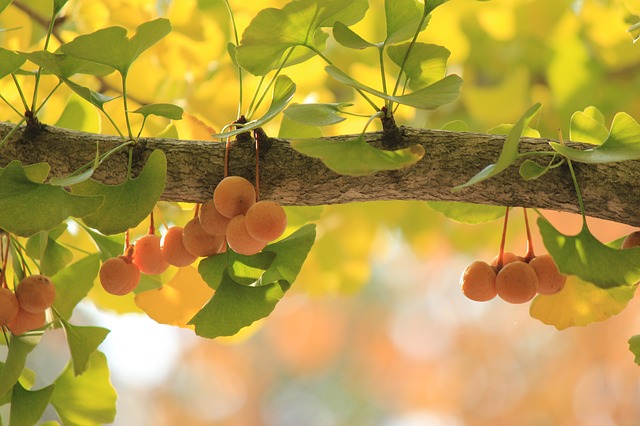
The leaves are distinctively two-lobed and fan-shaped. They are somewhat leathery, rich green in color with diverging (almost parallel) veins. The leaves turn bright yellow in fall. Ginkgo’s are dioecious, meaning there are separate male and female trees. American nurseries usually only sell male trees, because the females produce copious amounts of foul-smelling fruit in the autumn.
The fruit is a fleshy, brownish orange in color and about the size of a cherry. Inside the fruit is an edible nut. The nut is considered a delicacy in East Asia. It is sold in Korea, Japan and China as “silver apricot nut.” They are usually toasted prior to eating and used in desserts, soups and with meat. Only a few seeds should be eaten at a time because they contain a bitter glycoside that is considered mildly toxic.
Part Used Medicinally
The leaves are primarily used as medicine. Although, in Asia the nut is also used in moderation.
Chemical Constituents
The Cleveland Clinic writes extensively about Ginkgo’s chemical compositions. “Ginkgo biloba leaf extract contains flavonol and flavone glycosides, lactone derivatives (ginkgolides), bilobalide, ascorbic acid, catechin, iron-based superoxide, 6-hydroxykinuretic acid, protocatechuic acid, shikimic acid, sterols and vanillic acid. The major classes of active ingredients are the ginkgolides and bilobalides (also known as terpenes) and the flavonoids.”
Two of the main flavonoids in Ginkgo biloba are Quercetin and Rutin. Both are frequently used as anti-inflammatory and anti-viral agents and to stabilize mast cells.
Medicinal Properties
Ginkgo is antitussive and expectorant for coughs. It is most well known as a cerebrovascular trophorestorative, with antioxidant and vasodilating properties. Ginkgo is a cardiovascular tonic that Increases blood flow (peripherally and centrally). That means that Ginkgo helps stabilize the blood vessels and circulation in and to all parts of the body. The herb has a special stabilizing effect on the smaller blood vessels called capillaries helping them to pass nutrients and oxygen more efficiently to the varies tissues in the body. Ginkgo also has anxiolytic or anti-anxiety and anti-depressant properties. .
Preparations
- The tincture or liquid extract is used for mild circulatory deficiencies.
- Dried leaf preparations (in formula) are common in Traditional Chinese Medicine (TCM) to treat respiratory complaints.
- Standardized extract may be most appropriate for serious cerebral or circulatory issues. Look for standardized extracts that contain 24% flavone glycosides and a minimum of 6% terpene lactones.
Standardized Extracts
Studies show that Ginkgo standardized extracts improve the uptake and utilization of oxygen and glucose by brain cells. Taking small doses on a regular basis may improve thinking skills in young and middle-aged people. Ginkgo extracts taken on a regular basis has also shown to improve memory recall and increase the speed of mental processing in those with no sign of memory loss.
Dosage Suggestions
- Tincture (1:4): 2-3 mL TID (three times per day).
- Standardized Extract 60–120 mg twice per day
Energy and Taste
In TCM (as well as Ayurveda), the taste of a plant suggests how it will work in the body. Ginkgo tastes bitter and sweet. Bitter tastes typically have a cleansing action that may promote the clearing of “damp heat” by cooling and drying the system. Bitter tastes cleanse bodily systems by promoting the elimination of toxins and phlegm through the urine and bowels.
Sweet, on the other hand, tends to slow down acute reactions and detoxify the body. They are cooling and slightly moistening, often with a tonic effect that helps vitalize the system.
Medicinal Use of Ginkgo Biloba
The tonifying effects of Ginkgo are thought to act primarily on the heart, lungs and nervous system. Traditional Chinese Medicine practitioners (TCM) put ginkgo leaves into the ‘Herbs that relieve coughing and wheezing’ category. Historically, the leaf extract is used to treat respiratory ailments, such as asthma and bronchitis.
Today, Gingko biloba standardized leaf extract is employed as a vascular and cerebral tonic. It is often used to enhance cerebral blood flow, inhibit the formation of blood clots, help regulate the tone and the elasticity of arteries and to stabilize capillary permeability. Its use may improve peripheral blood flow acting to vitalize, restore or protect cognitive function. Additionally, Ginkgo has a special affinity for the nervous system.
In TCM, the Heart is believed to be the storehouse of the “spirit” which refers to someone’s vitality. The lungs are thought to play a key part in the nourishing of body fluids. This makes sense from the perspective of yoga physiology, which tells us that the lungs and heart are joined, the lungs being the main pumping force for prana or the life force. The heart is the house for our true spiritual self, called the cit. The lungs, heart and nervous system then work together to bring life energy to the tissues.
Popular Uses for Ginkgo biloba
Ginkgo biloba has been significantly researched and has many uses. Below are some of this plant’s more popular of its many uses.
- Asthma
- Allergies
- Bronchitis
- Cardiovascular disease
- Improves peripheral blood flow
- Dementia
- To help Improve memory and concentration
- Increase attention span
- Improves cerebral circulation
- Helpful for mild Alzheimer’s disease
- To Delay the progression of dementia
- Varicose Veins
- Diabetic or other neuropathies with “pins and needles pain”
- Tissue hypoxia or the starving of oxygen and atrophying of muscle and tissue.
- Tinnitus
- Vertigo and dizziness
- Meniere’s disease
- Atherosclerosis
- To help treat anxiety and depression in the elderly
- Diabetic or other type of retinopathy
- Cataracts
- To help slow or prevent glaucoma
- Migraine (with Co-Q-10 and B2)
The World Health Organization and the German Commission E have included additional uses for Ginkgo to include peripheral arterial occlusive diseases. That means that when there is a blockage of blood flow or narrowing of the arteries of the legs or arms (usually the legs), Ginkgo encourages healthy blood supply to the limb, while discouraging the formation of blood clots and supporting the tone and elasticity of the artery. It has also been shown useful for treating anorgasmia (or the inability to achieve orgasm) in women who take antidepressant medication.
Best in Formula
Ginkgo biloba, for all of it’s many uses, almost always works best in formula. Depending on the symptoms, diagnosis and individual situation of the person. Additional herbs are added to support, direct and increase the usefulness of the herb. When working with herbs as medicine, we always take the whole person into account.
Herbal Recipe for Ginkgo
One possible recipe from Mary Bove
Long term adaptogen to support cognitive brain function
Mix equal parts:
- Bacopa (bacopa monnieri)
- Ginkgo biloba Rodiola rosea
- Turmeric (Curcuma longa)
Use in extract form or powdered in a capsule or mixed in honey Take 2 caps or 30 drops 2x per day for several months of ongoing support
Drug Interactions and Contra-indications
Ginkgo in any form has blood thinning properties when used alone. It’s use may promote retinal micro bleeding. Ginkgo biloba should not be used with blood thinning medications including aspirin and warfarin. Stop taking 4 days before elective surgery and begin again 4 days after.
People taking selective serotonin reuptake inhibitors (SSRI) as antidepressants should not take ginkgo as it inhibits monoamine oxidase, reducing the effectiveness of the medications. Examples of SSRIs are Prozac, or fluoxetine, and sertraline, also known as Zoloft.
People who are allergic to poison ivy and similar plants should avoid Ginkgo.
Possible side effects
Two private reports received of bleeding in the eye induced by taking high amounts of ginkgo alone (not in formula). Most common other side effects are gastrointestinal upset and headache. Headache is relatively rare with the standardized extracts, but common with the tincture if taken persistently. The European standardized extracts have toxic constituents removed.
The possible side effects of ginkgo biloba include nausea, diarrhea, dizziness, headaches, stomachache, restlessness, vomiting and skin rash.
Read More
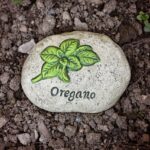

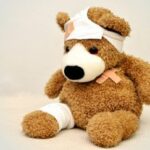
Healing the causes of suffering – A four-step model for healing
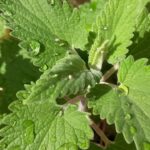
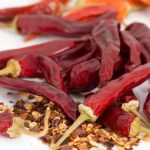
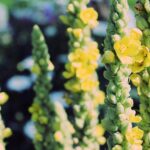
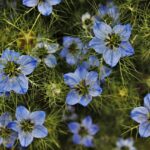
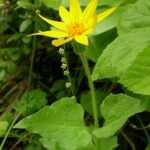
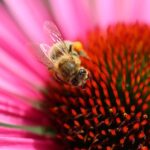

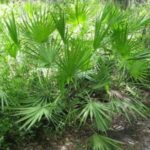

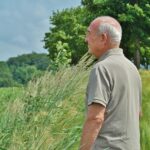

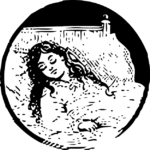




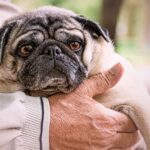

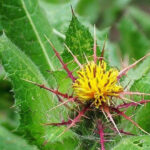
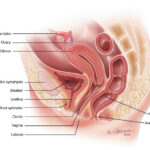



Herbs and Supplements that Support Healing of a Traumatic Brain Injury


References
https://www.gardeningknowhow.com/ornamental/trees/ginkgo/fruits-of-ginkgo-trees.htm
https://www.clevelandclinicmeded.com/medicalpubs/pharmacy/sepoct02/ginkgo.htm
https://www.meandqi.com/herb-database/ginkgo-leaves
IARC monographs 108-3 Ginkgo Biloba
https://www.medicalnewstoday.com/articles/263105#history
Personal notes from Southwest Conference on Botanical Medicine conference notes 2001
Notes from workshops attended at Southwest Conference on Botanical Medicine conference notes 2019
Southwest Conference on Botanical Medicine conference notes 2018
Stephen Harrod Buhner, Herbal Treatment for Coronavirus infections, 2020
Disclaimer
The statements and ideas presented here are not intended to diagnose, treat, cure, or prevent any disease or condition. They have not been evaluated by the FDA. All ideas presented are for the sole purpose of education. To help you take control of your own health. If you have a health concern or condition, consult a physician. We suggest that you always consult a medical doctor before modifying your diet, using any new product, drug, supplement, or doing any new exercises.
These statements and products have not been evaluated by the FDA. They are not intended to diagnose, treat, cure, or prevent any disease or condition. If you have a health concern or condition, consult a physician. Always consult a medical doctor before modifying your diet, using any new product, drug, supplement, or doing any new exercises.
Herbs taken for health purposes should be treated with the same care as medicine. Herbal remedies are no substitute for a healthy diet and lifestyle. If you are serious about good health, you’ll want to combine diet, exercise, herbals, a good relationship with your doctor and a generally healthy lifestyle. No one of these will do it alone.
This information is designed to be used as part of a complete health plan. No products are intended to replace your doctor’s care, or to supersede any of his/her advice or prescriptions.

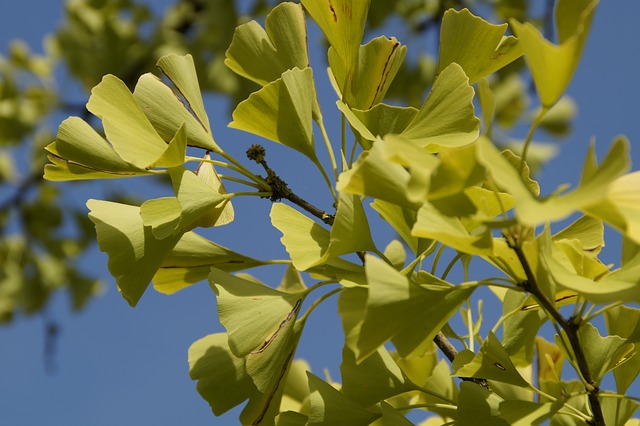
In Traditional Chinese Medicine Ginkgo is a cumulative poison. In my body, I never get headaches, but if I take Ginkgo, I do. Just wanted to share my experience. Many blessings to you, Hank
Please excuse any typos
Thank you Hank for sharing your incites are always valuable. This is one of the reasons to start with a low dose and take time to listen to the body. I think also the the tincture is more likely to cause side effects than the standardized extract. I also think it’s always a good idea to take a break from any supplement whether building up or not.
Stay safe and many blessings to you Hank
Annie